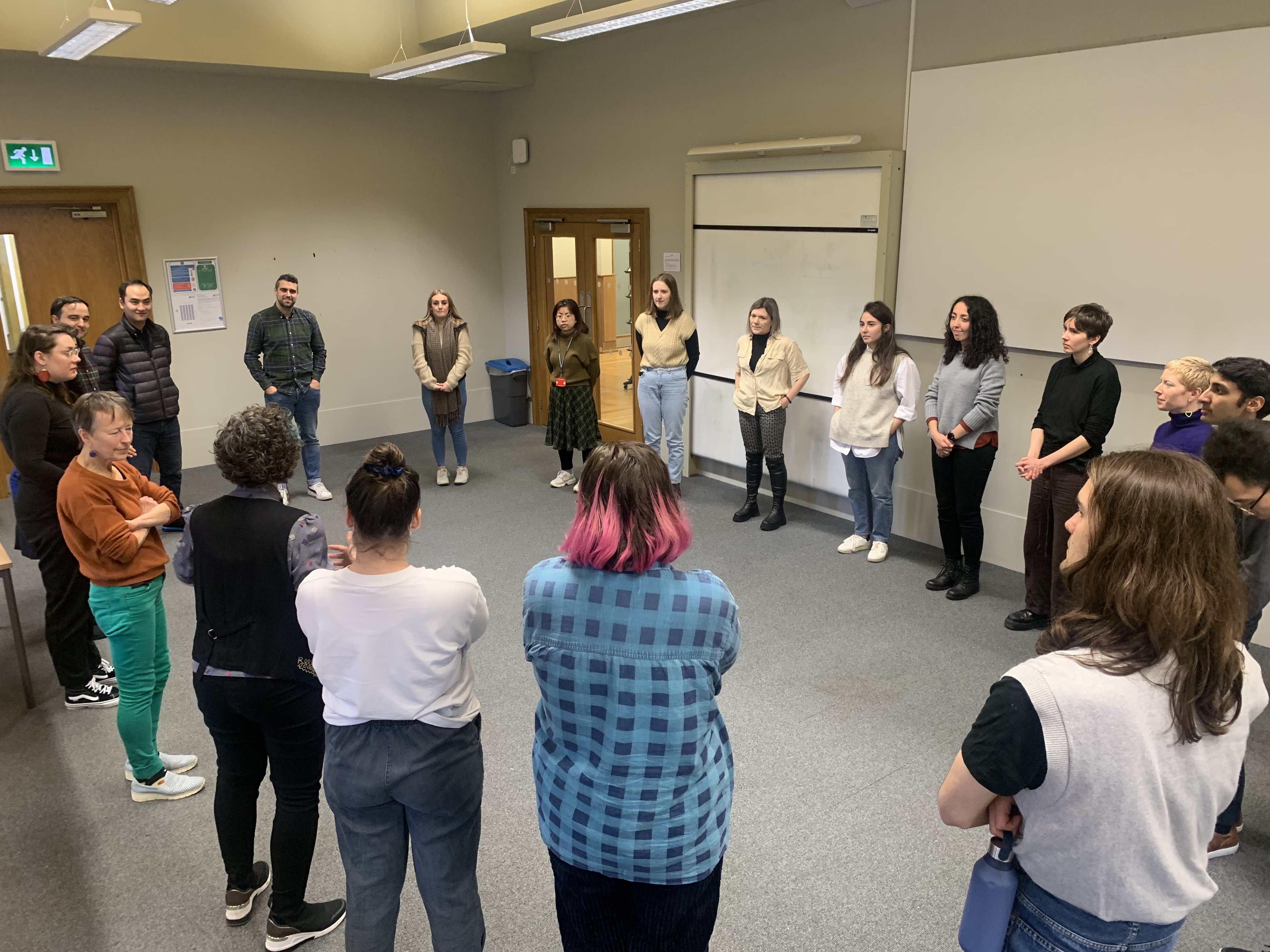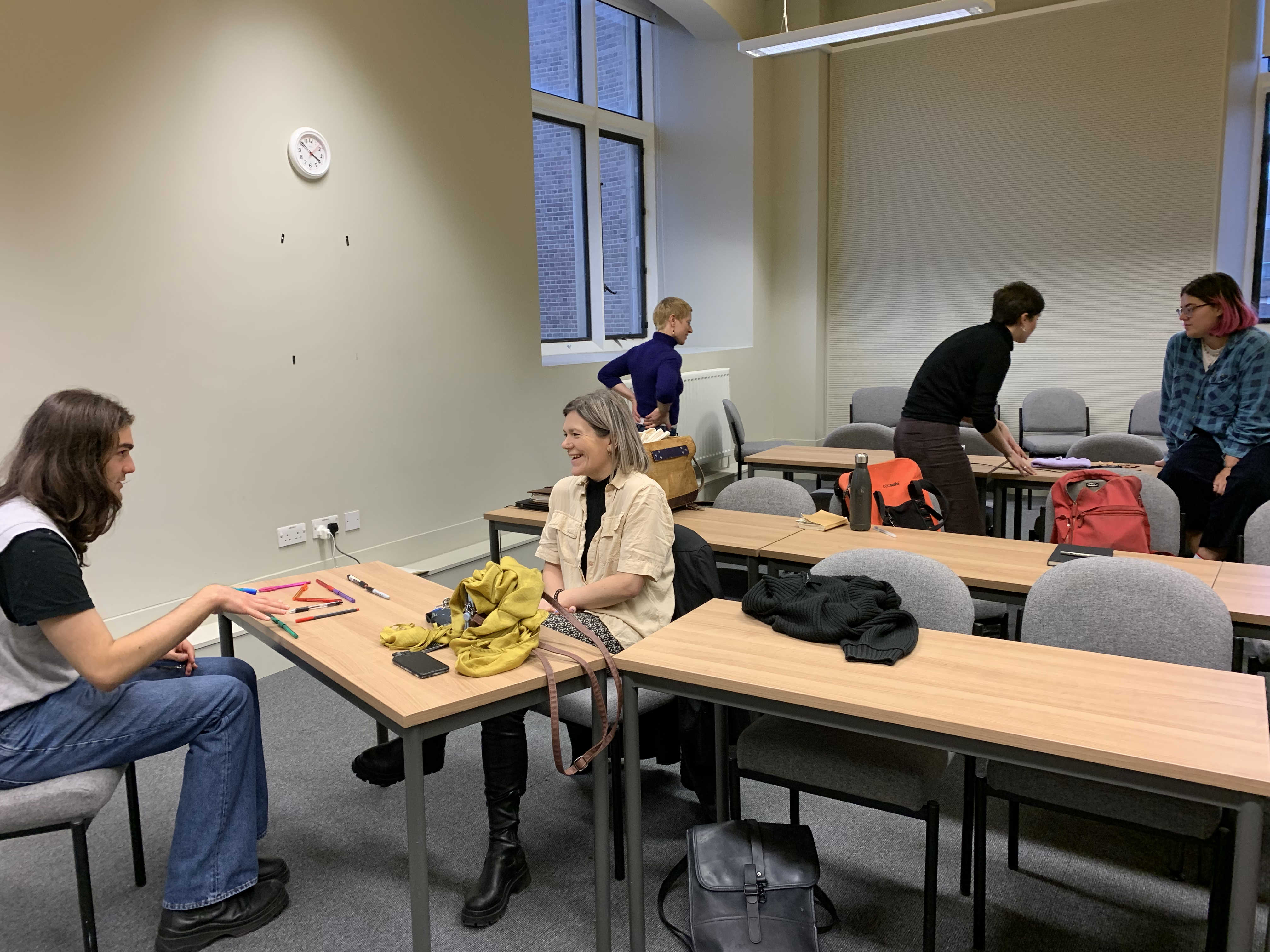We Shape this City
Summary
20 staff, students and PGR’s from a range of disciplines came together for the ‘We Shape This City’ workshop on 7th November 2022.
A workshop exploring creative practice in city-making professions led by two theatre for change practitioners: U.S.-based visiting artist and urban planner C. MerandaFlachs-Surmanek and Newcastle-based artist Rosa StouracMcCreery.We Shape This City will explore theatre and arts-based processes that can build connections between ideas, people, and stories. The workshop offers fresh insights for creating meaningful dialogue between city-making professionals and communities, and for re-imagining places with justice and democracy in mind. Accessible tools for creating content drawing from participants' own experiences will be shared and practiced, with consideration of the ethics of these practices. Creative strategies for research engagement within city-making scholarship will be considered.’
Rosa StouracMcCreery: @theatreforum_ne on twitter and instagram
C MerandaFlchs-Surmanek: https://merandissime.com
Description
The workshop involved a range of drama games and activities for facilitating participatory city-making. We began by introducing our official job description, then how most people imagine what we do, then what we actually do. This was useful because it enabled us to explore how we communicate our work to people from a range of disciplines. Then we moved onto a clapping warm up game, which helped to consider the importance of listening to and focusing others. A range of walking, embodied warm ups encouraged us to connect with each other, use our bodies, fill the space and reflect on the rules that we often follow, in our lives and our work. Next, there was a chance in pairs to introduce a story connected to our name. We were asked to introduce our partners name to a bigger group as though it was our own. Speaking about our partner’s names raised issues associated with culture, history, family, belonging, and this game provided an opportunity for us to think about listening carefully, and to consider what it feels like to inhabit and translate somebody else’s story.
We noticed how the body became significant in this process, as stories came alive through gesture. In a circle we shared ‘something my hands have done today’ using voice and the body. This introduced the things that we share,and our differences and provided a gentle exercise for introducing embodied research methods. The following two exercises focused a) on time and b) on site, space, place. We were asked in a space to create a still image to demonstrate we were doing at 4am in the morning yesterday, then 5am, and then every hour moving through the 24 -hour clock. Then we could perform ‘what we found most enjoyable from that day’ and what we found ‘the most challenging,’ finally performing something we could do to change the most challenging activity. There were difficulties with this activities, associated with how routine or not an individual day is, a desire to curate your activities, and our facilitators gave some examples of this device providing important insights into how participants time has been regulated, for example a group of veterans discovered their shared inability to sleep. Finally, we worked in pairs to develop an exercise inspired by the work of James Rojas and Janice M. Irvine. Here we found objects from our bag or pockets and used them to make a model of our neighbourhood. We then gave our partner a tour of our neighbourhood. We could have spent a whole hour or two on this activity and it raised some useful questions about how we might begin to share stories about where we live. What difference does it make to do this using familiar objects that we already own? How might this be useful to open a conversation about how we shape and live in our cities?
The day in pictures:




Some feedback from the day includes:
It was exciting; it was challenging at first because I am a self conscious person, but then just this feeling of going for it; it was inspiring for me and these open ended exercises, I am not the sort of person who pushes myself out of my comfort zone, but then everybody does it, and then it’s my turn, and that’s good; I really enjoyed it; I found it very freeing and very – this can do mentality an exercise doesn’t have to be difficult you can just go and do it, as a participant and practicioner, a gift; so many activities today I feel motivated and with more energy; once the weirdness is shaken off, the relevance became clear; it was interesting to see what I normally do applied in a different space and seeing how different people interact with it; I thought it was cool; I was relaxed and interested; welcoming and informative; lovely to be in a room with other human being and I wish we could do more of these; exciting because of the very different background and professional fields that we all come from; intriguing, wonderful to collaborate; really nice to see so much similarity across the difference, so much shared experience in the room, and that was nice to witness; opening horizons and spreading positivity; accepting, welcoming, thought provoking; immersive experience, it was amazing, but I was tired by the end; I have just come to the north east of England, this is a good and warm memory in this city, it reminds me that there is community and place in this city; inspired, because I can see different peoples point of view, for example when I described the city as tour guide I could see how differently I saw it.

